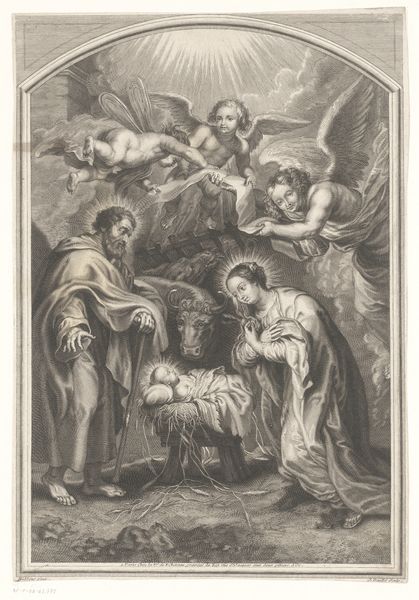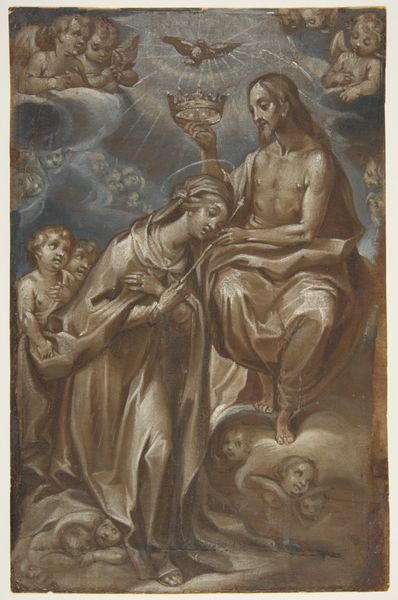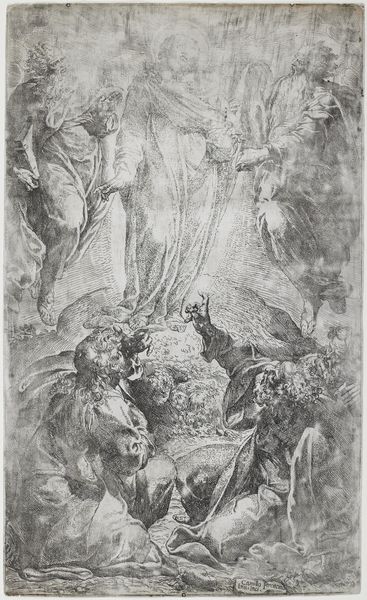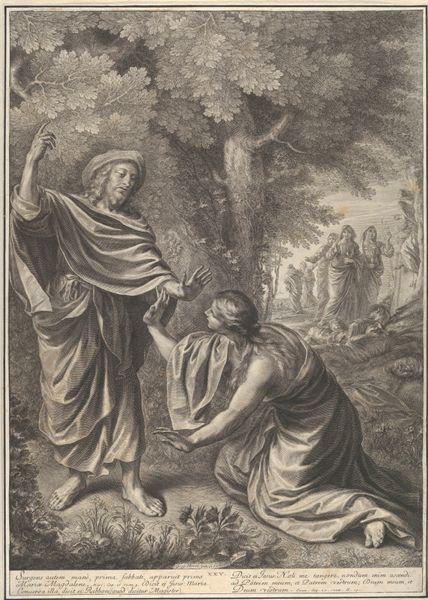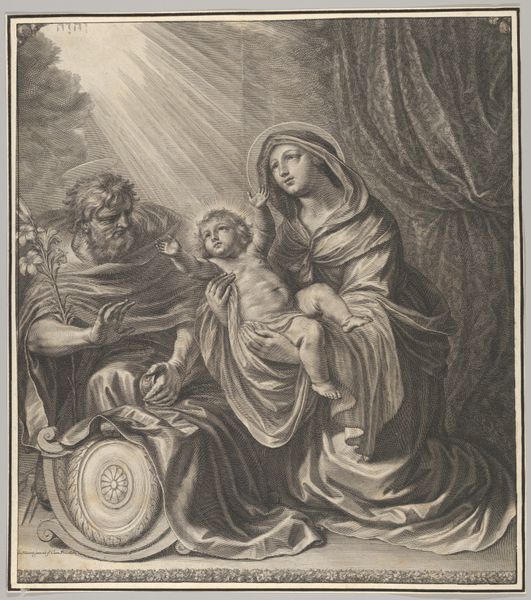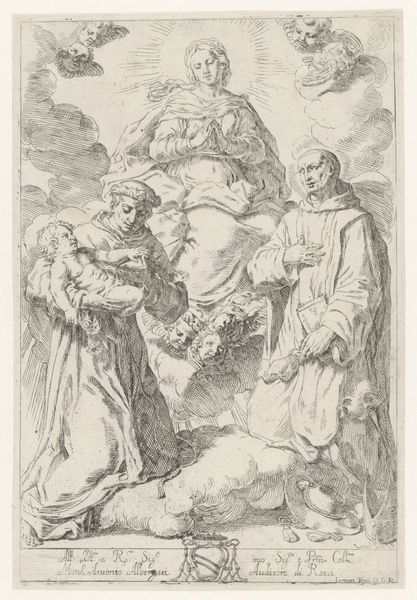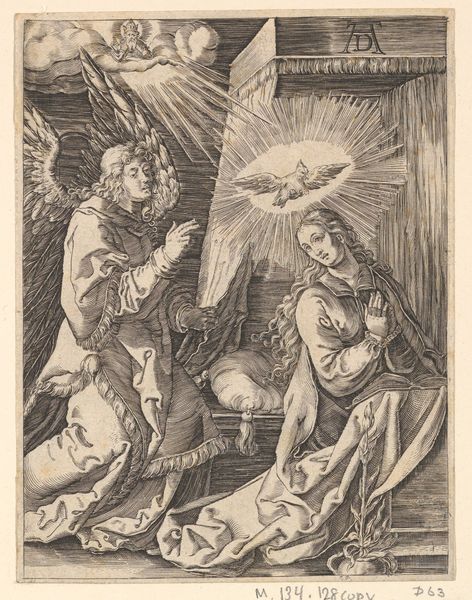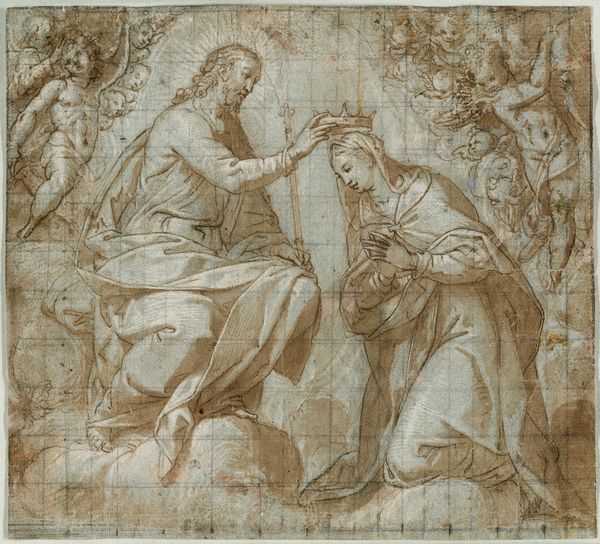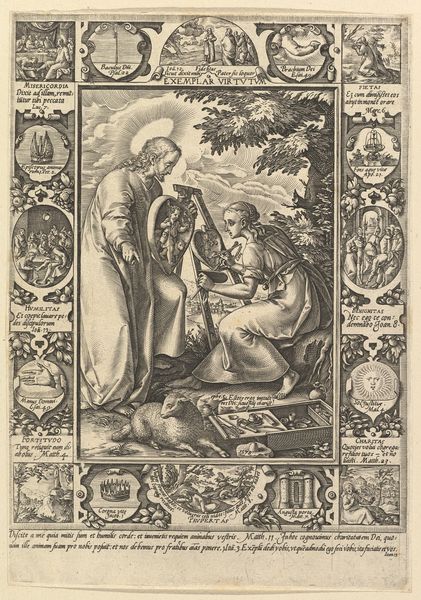
Christ Receiving the Virgin into Heaven 1554 - 1627
0:00
0:00
drawing, print, ink, pen, charcoal
#
drawing
#
baroque
# print
#
charcoal drawing
#
figuration
#
oil painting
#
ink
#
pen
#
charcoal
#
history-painting
#
charcoal
#
virgin-mary
#
angel
#
christ
Dimensions: 12 5/16 x 9 1/16in. (31.3 x 23cm)
Copyright: Public Domain
Editor: This drawing by Giovanni Battista Paggi, dating sometime between 1554 and 1627, depicts Christ Receiving the Virgin into Heaven using pen, ink and charcoal. It strikes me as both serene and powerfully symbolic. What do you see in this piece, particularly regarding its cultural or historical context? Curator: I see a potent intersection of the personal and the political, couched in religious imagery. While on the surface it depicts a moment of divine grace, the act of Christ welcoming Mary into Heaven, it also functions as a negotiation of power, gender, and the role of the feminine within the patriarchal structures of the Church. Editor: Negotiation? Can you elaborate on that? Curator: Absolutely. Consider the historical period. The late 16th and early 17th centuries were a time of significant religious upheaval, the Counter-Reformation. The elevation of Mary becomes a visual assertion of Catholic doctrine against Protestant challenges. How might this image serve as a response to the Reformation’s critique of the veneration of saints? Editor: So, the artwork uses the familiar visual language of religious art to make a specific claim about the importance of Mary in a time of religious conflict? It is like visual propaganda. Curator: Precisely. Furthermore, consider the visual composition: Mary, while being received into Heaven, is still depicted as subordinate to Christ. It reinforces existing gendered power dynamics, even within a moment that seemingly celebrates female piety. Where is her personal agency in this moment? Editor: It’s fascinating how a seemingly devotional image can be unpacked to reveal complex negotiations of religious and social power. Curator: Indeed. And this complexity is what makes art so engaging – its ability to reflect and shape the very cultures that produce it. Editor: I see it now. This has shifted my perspective considerably; it is not just a gentle religious scene but a statement about power and the place of women in society. Thank you.
Comments
No comments
Be the first to comment and join the conversation on the ultimate creative platform.

